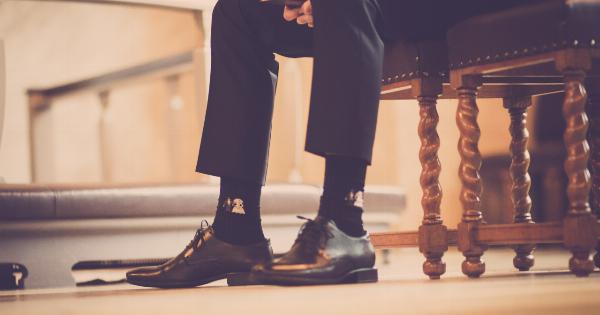Walking without shoes may feel nice, but it can be incredibly dangerous. From cuts and bruises to infections and serious diseases, going barefoot puts men at risk of many perils.
Let’s explore some of the dangers of being shoeless and what men can do to protect themselves.
Cuts and Bruises
When walking barefoot, your feet are susceptible to cuts and bruises from rocks, sticks, broken glass, and other sharp objects. Even a small cut can become infected if not properly treated.
Additionally, constant exposure to rough surfaces can cause thickening of the skin, making feet more vulnerable to injury.
Fungal Infections
Men who go barefoot are at an increased risk of fungal infections such as athlete’s foot and nail fungus. These infections thrive in warm, moist environments like communal showers, pools, and locker rooms.
Without proper protective footwear, it’s easy to pick up these infections.
Bacterial Infections
The risk of bacterial infections is higher for men who frequently go barefoot. Without shoes to protect their skin, they are vulnerable to bacteria that can enter through cuts or wounds.
Bacteria such as tetanus, staph, and strep can cause a range of infections, from skin rashes to life-threatening illnesses.
Tetanus
Tetanus is a bacterial infection that can be fatal. It enters the body through open wounds and can cause muscle stiffness and spasms, as well as difficulty swallowing and breathing.
Tetanus is particularly dangerous for men who go barefoot as it often infects soil and rusted metal, both of which are common sources of injury.
Hookworm Infection
Barefoot men are also at risk of hookworm infections, which are caused by parasites that live in contaminated soil. These parasites enter the body through the feet and can travel to the intestines, where they cause anemia, fatigue, and other symptoms.
Hookworm infection can be treated with medication, but it’s important to avoid exposure by wearing shoes and staying out of contaminated areas.
Spider and Snake Bites
Walking barefoot can also put men at risk of spider and snake bites. Snakes and spiders tend to inhabit warm, dry areas such as parks and hiking trails, and their bites can be venomous and even life-threatening.
Protective footwear can help reduce the risk of these types of injuries.
Plantar Fasciitis
Plantar fasciitis is a painful condition that affects the thick band of tissue that runs across the bottom of the foot. Men who go barefoot or wear poorly-fitted shoes are at an increased risk of developing this condition.
Symptoms include heel pain, stiffness, and swelling. Treatment includes rest, exercises, and properly fitted shoes.
Diabetes Complications
Men with diabetes should avoid going barefoot as they are more susceptible to foot injuries and infections. Diabetes can cause nerve damage and reduce blood flow to the feet, making it difficult to feel cuts and bruises.
This can lead to serious complications such as ulcers, infections, and even amputations.
Prevention
Preventing foot injuries and infections is easy. Men should always wear protective footwear when walking outside, especially in areas with rough surfaces, contaminated soil, or snakes and spiders.
Additionally, they should keep their feet clean and dry, trim their nails regularly, and avoid sharing shoes or socks with others.
Men with diabetes should take extra care to protect their feet by monitoring their blood sugar levels, checking their feet daily for cuts or sores, and wearing shoes that fit properly.
Conclusion
The dangers of walking barefoot are many, from cuts and bruises to infections and serious diseases. Men can protect themselves by wearing protective footwear and taking care of their feet.





























